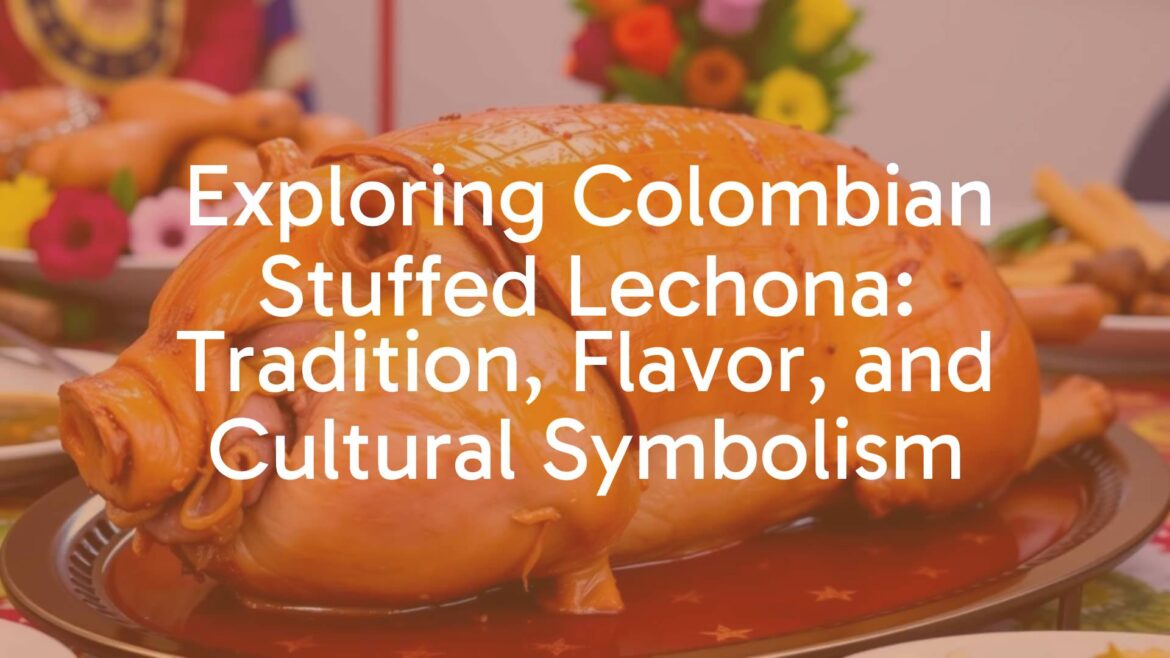Introduction to Colombian Stuffed Lechona
Colombian stuffed lechona stands out as one of the most celebrated and communal dishes in Colombian cuisine. This savory delicacy is an iconic feature at festivals and family gatherings, renowned for its meticulous preparation and rich, harmonious flavors. At its essence, lechona is a whole, deboned pig, stuffed with a flavorful mixture and slow-roasted to golden perfection. Its significance reaches far beyond the dining table, serving as a symbol of festivity and unity in Colombian culture.
Historical Roots and Evolution
Lechona traces its origins to the Tolima region of central Colombia, where it has been embraced as a culinary institution for centuries. Influences from Spanish colonial cooking methods—especially the roasting of whole pigs—blend seamlessly with indigenous Colombian ingredients and techniques. Over generations, lechona evolved from a regional specialty to a national emblem of celebration, often reserved for major holidays, weddings, and town festivities.
Signature Characteristics and Ingredients
What sets Colombian lechona apart is its generous filling and the dramatic roasting process. The stuffing typically consists of rice, yellow peas, onions, fresh herbs, and an assortment of spices, all combined with tender bits of pork meat and skin. Sometimes, local twists are added, such as green peas, hard-boiled eggs, or even pickled vegetables, depending on the chef’s preference or regional tradition.
Preparation involves removing the bones from the pig—leaving the skin intact—before marinating and filling it with the seasoned mixture. The assembled lechona is then slow-roasted for several hours, usually in a large outdoor oven or pit, resulting in mouthwatering, tender meat surrounded by crispy, golden skin.
Regional Variations Across Colombia
While lechona is most closely associated with Tolima, neighboring departments like Huila and Cundinamarca have developed their own interpretations. The basic foundation—pork, rice, and peas—remains constant, but small differences in seasoning, additional fillings, and roasting methods contribute to local variations. In some regions, the stuffing may feature more aromatic herbs, or the rice might be replaced by other grains to reflect local preferences.
Cultural Importance and How It’s Served
Stuffed lechona is deeply entrenched in the daily life and tradition of Colombian communities, especially during special events. It is customary to serve lechona on banana leaves, often accompanied by arepas (corn cakes) and a zesty side sauce known as “hogao.” Guests typically share lechona communally, each receiving portions of both stuffing and crispy pork skin—a highlight of the experience. Its preparation and serving foster a sense of togetherness, transforming meals into lively, celebratory occasions.
Frequently Asked Questions and Tips
What occasions call for lechona?
Lechona is most often prepared for large gatherings, including local festivals (fiestas patronales), Christmas, weddings, or any significant family reunion. It represents abundance and is seen as a mark of hospitality.
Is lechona always made with pork?
Traditionally, yes—pork is essential to the classic version. However, some contemporary adaptations for dietary preferences have appeared, using other meats or even vegetarian fillings, though these are rare and less traditional.
How is lechona best enjoyed?
Lechona is at its finest when shared with a group, with portions including both stuffing and a piece of crackling skin. Complementary sides like arepas and ají sauce can enhance the flavors further.
Conclusion
Colombian stuffed lechona is much more than a dish—it’s an experience steeped in community spirit and gastronomic artistry. Its elaborate preparation and robust flavor profile reflect the country’s regional diversity and deep-rooted traditions, making every serving a taste of Colombian culture itself.


